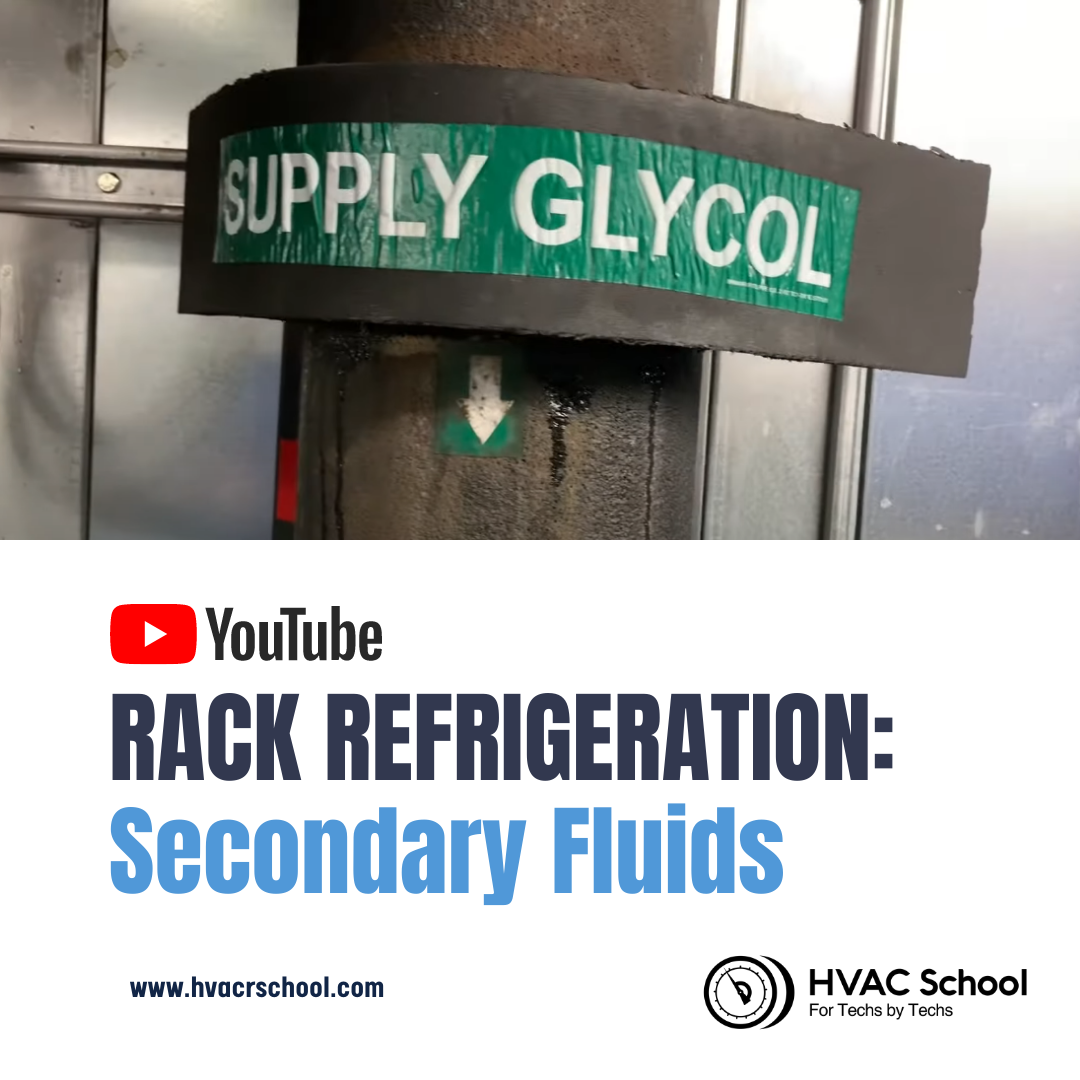Rack Refrigeration: Secondary Fluids
December 16, 2021


On the chiller side of a rack, the piping goes to the pump station and out to the store below. Chillers are actually quite similar to hydronic systems, as they have pumps and pump controllers. You can expect to see some spare glycol, electronic valves, and heat exchangers in the rack room on a glycol system. Heat transfer occurs in heat exchangers, where heat gets rejected from the refrigerant and moves to the glycol.
These racks may also put discharge heat into the glycol. That heat can then be supplied to the reheat coil in the air conditioner or used for warm fluid defrost.
When the rack puts discharge heat into the reheat circuit, it pumps the glycol using a circulating constant-volume pump, which helps the glycol go through the heating loop for the reheat coil. In the case of this rack, the lines go out of the rack at the bottom. Those lines run underneath the roofline and come back up into the A/C system across the rooftop. As with some other reheat coils, this system has a three-way valve to modulate the glycol flow through the coil.
The rack may have another heat exchanger for warm fluid defrost. The discharge gas can warm up some of the return glycol coming back from the A/C reheat coil. That discharge gas can also go down to evaporators or cases that need defrosting.
On the other side of the rack, we have the piping that allows the glycol to go down to the cases. There is also a three-way valve on the discharge line, which allows us to use discharge gas to heat water for use in the store. (These pipes have been labeled as “water heat reclaim.” They lead to heat recovery tanks specifically for hot water.)
Comments
To leave a comment, you need to log in.
Log In